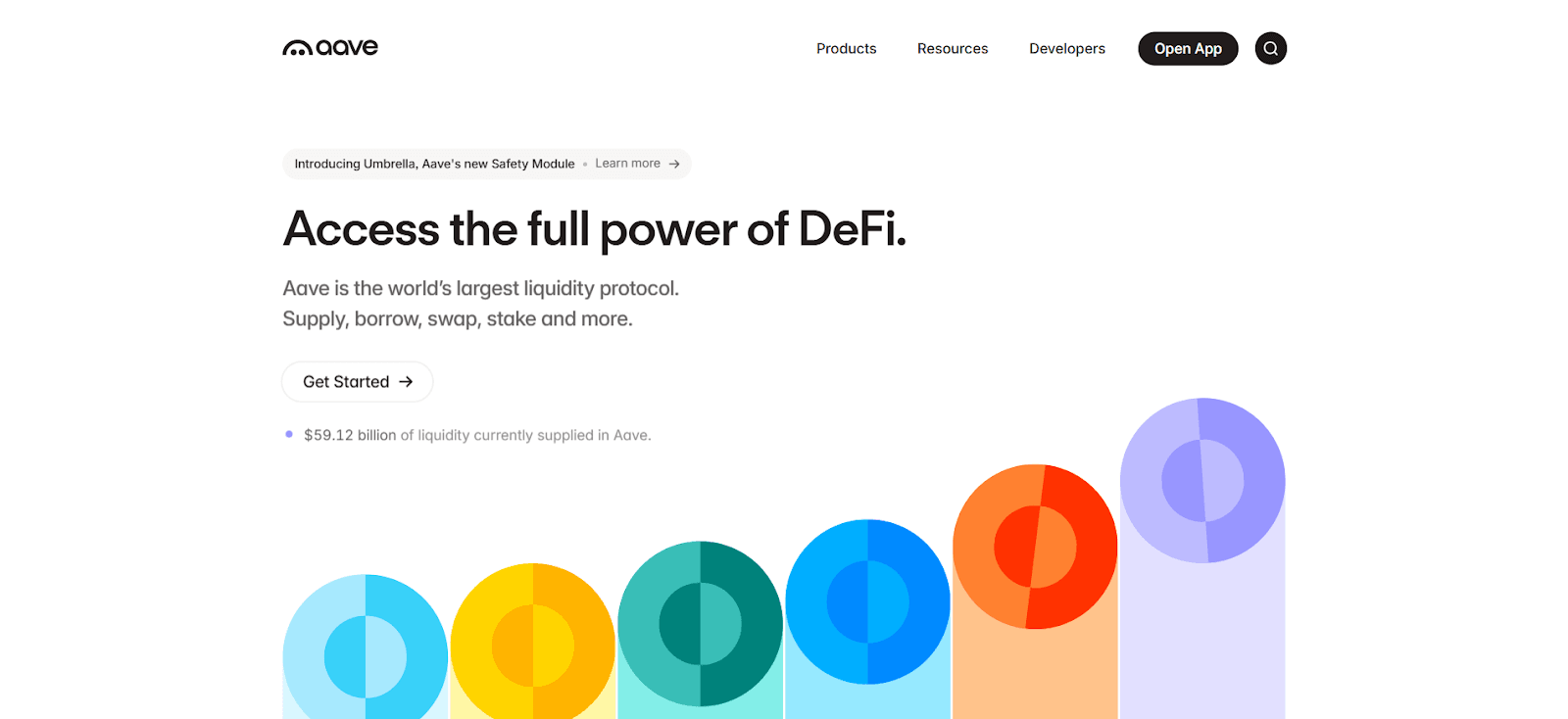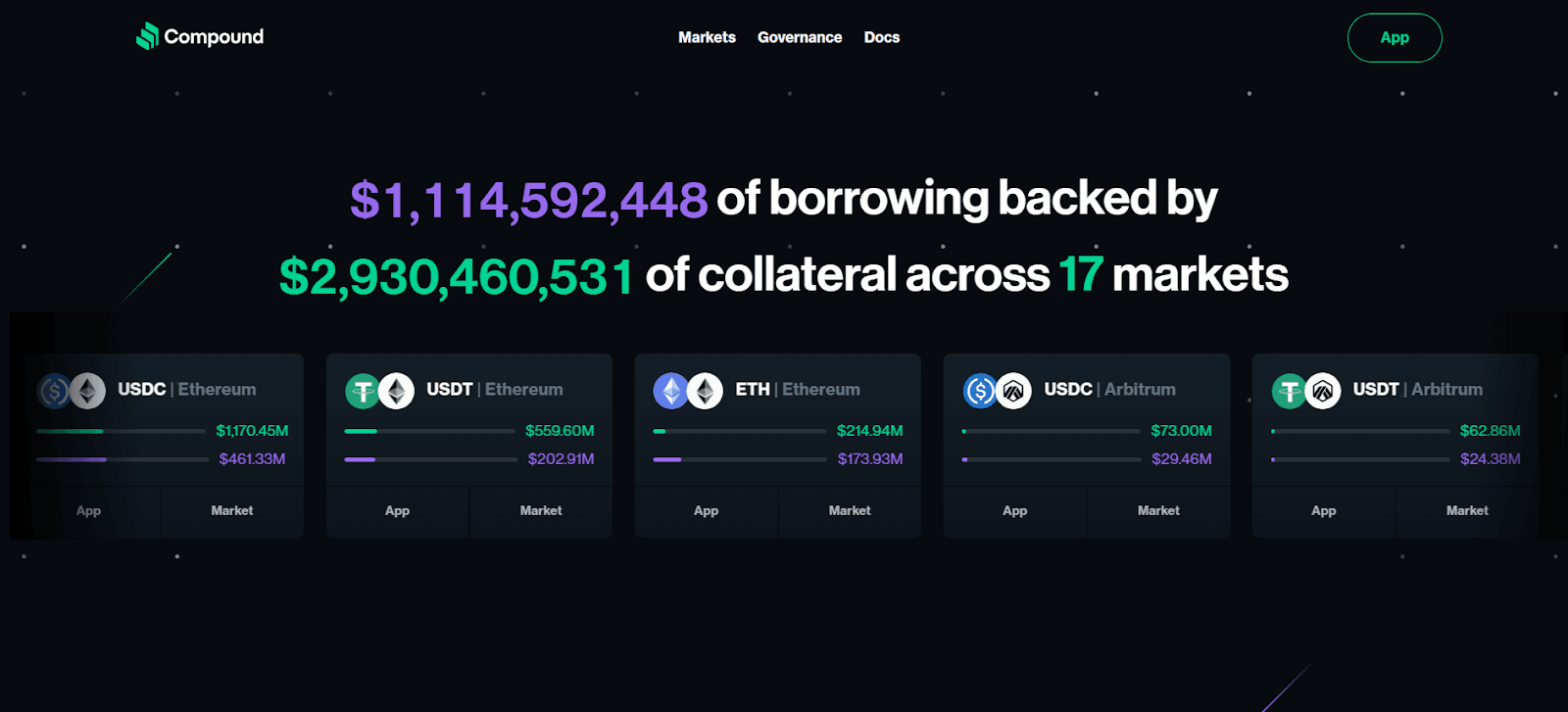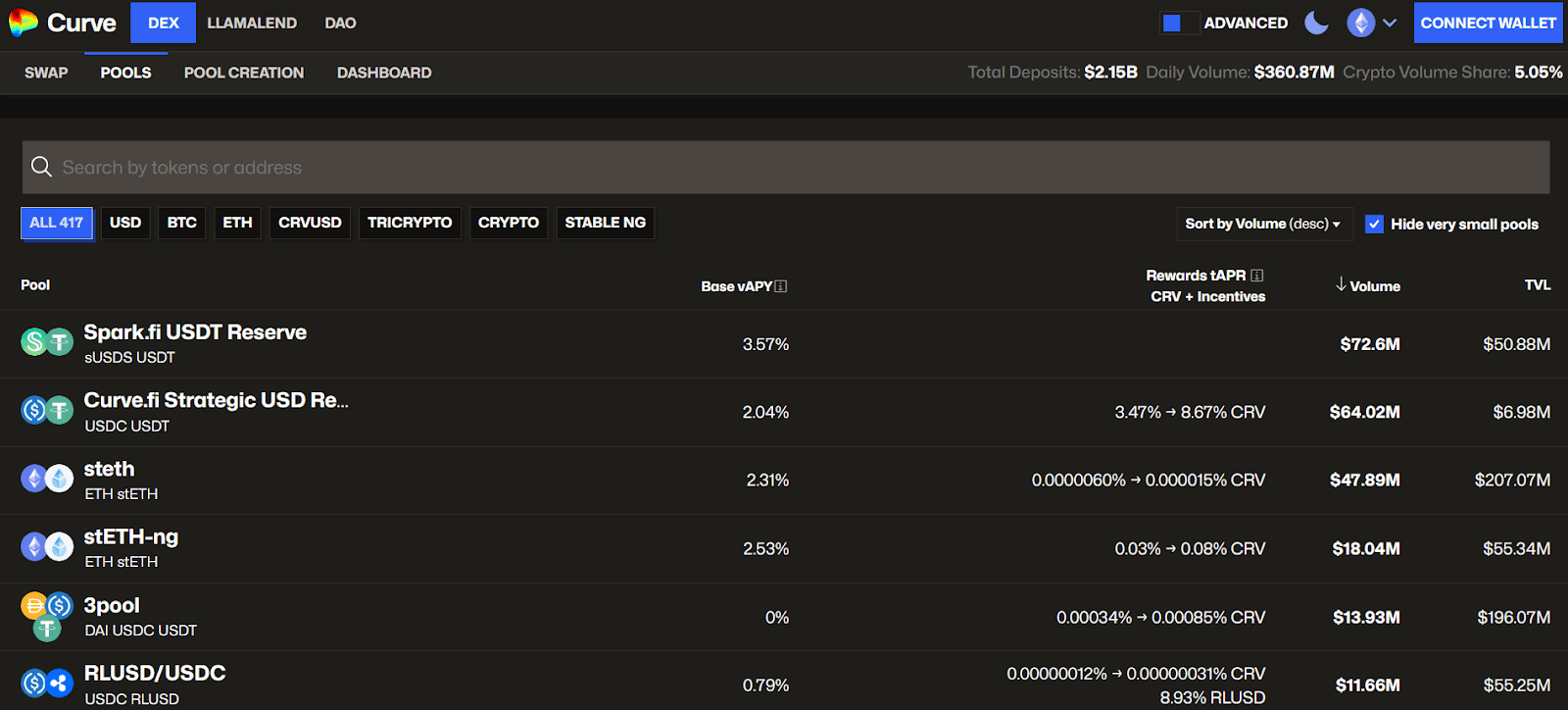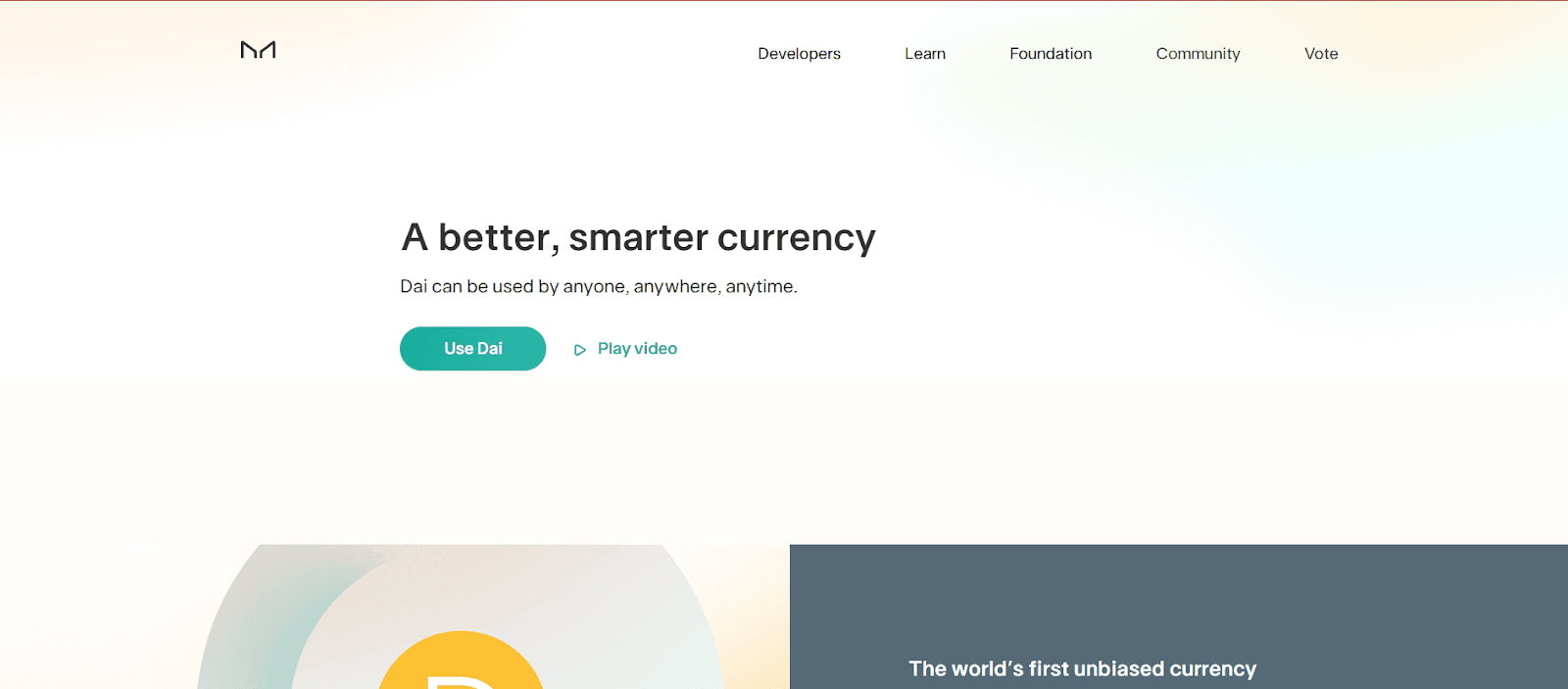business resources
Top 5 DeFi Lending Apps You Should Know About in 2025
29 Aug 2025, 4:49 am GMT+1
Decentralized finance (DeFi) lending has transformed how users access liquidity, offering permissionless borrowing and lending without intermediaries. DeFi lending platforms continue to innovate with better yields, enhanced security, and cross-chain functionality.
Read on to discover the top DeFi lending apps, diving deep into their unique features, supported assets, interest models, and use cases.
TL;DR
- DeFi lending apps let users earn yield on idle crypto holdings or unlock liquidity without selling assets, all through non-custodial, smart contract-based platforms.
- Liquidium is the first truly decentralized cross-chain lending protocol, allowing users to deposit native BTC and borrow assets like USDT or USDC without wrapping or using centralized bridges.
- Aave, Compound, Curve Finance, and MakerDAO also offer a range of established DeFi lending solutions.
What Are DeFi Lending Apps?
DeFi lending apps are decentralized platforms built on blockchain technology that allow users to lend and borrow cryptocurrencies without relying on traditional financial intermediaries like banks.
Lenders can earn interest on their deposited assets, while borrowers can access liquidity by providing collateral.
These platforms operate through smart contracts, which are self-executing contracts with the terms of the agreement directly written into code. This automated approach enhances transparency, security, and accessibility in the lending process.
Liquidium

Liquidium leads as the first truly decentralized, cross-chain DeFi lending protocol, granting users the ability to deposit and borrow assets across multiple blockchains, including Ethereum and Solana, without the need for wrapping or centralized bridges. You can access the protocol through the Liquidium app.
Key Features
- True cross-chain lending: Users deposit native BTC but can borrow stablecoins like USDT on Ethereum or USDC on Solana instantly and securely, without custodial bridges.
- Non-custodial, P2P model: Loans are directly matched between lenders and borrowers with live negotiation of terms such as LTV, loan amount, duration, and APY.
- Instant loan execution: Smart contract infrastructure allows fast approvals and transfers, boosting user experience.
- Native BTC yield: Bitcoin holders earn genuine BTC-denominated yields by lending their assets without needing to convert or wrap.
- User-friendly interface: Dashboards help users track loan status, balances, and make position adjustments easily.
Aave

Aave is one of the largest and most well-established decentralized liquidity protocols in the DeFi space. It’s known for its innovative features, such as flash loans, which are uncollateralized loans that must be repaid within the same blockchain transaction.
Key Features
- Flash loans: Instant, gas-efficient loans without collateral for advanced DeFi use cases.
- Flexible interest models: Borrowers can switch between stable and variable rates to manage borrowing costs.
- Open-source and audited: Strong security with transparent governance via the AAVE token.
- Multi-chain access: Enables lending and borrowing across several EVM-compatible blockchains.
Compound

Compound Finance introduced one of the earliest and most stable DeFi lending frameworks on Ethereum. It simplifies lending and borrowing by channeling various supplied assets into stablecoin loans, primarily USDC, thus improving capital efficiency and risk management.
Key Features
- cTokens system: Represents supplied assets, earning interest and usable as collateral elsewhere.
- Focus on USDC borrowing: Simplifies portfolio risk and liquidity while maintaining overcollateralization.
- Safety nets: Includes coverage options via Nexus Mutual and Opyn to enhance user security.
Curve Finance

Curve Finance is a DeFi app that specializes in stablecoin swaps and lending and borrowing through its crvUSD stablecoin and its lending-amm (llamma) mechanism. Curve's unique Automated Market Maker (AMM) model is designed to minimize slippage for stablecoin trades, which also benefits its lending operations by providing a stable environment.
Key Features
- Stablecoin focus: Support primarily for DAI, USDC, USDT, and crvUSD stablecoins.
- Low-slippage pools: Optimized for stable pricing and efficient liquidity.
- Permissionless credit markets: Flexible borrowing strategies with crvUSD.
- Soft liquidation: Mechanism designed to minimize borrower collateral losses during liquidations.
MakerDAO

MakerDAO is one of the original DeFi lending protocols and the creator of Dai, the world's first decentralized stablecoin pegged to the US Dollar. The protocol allows users to generate Dai by locking up collateral assets in smart contracts known as Maker Vaults. This process is essentially a collateralized loan; users borrow Dai against their deposited assets.
Key Features
- Dai stablecoin: Users borrow Dai, a decentralized stablecoin designed to maintain a 1:1 peg with the USD, ensuring predictable borrowing costs.
- Collateralized Debt Positions (Vaults): Users deposit various crypto assets as collateral (ETH, WBTC, and other approved tokens) to generate Dai loans. The system enforces overcollateralization to protect against volatility.
- Integration: MakerDAO underpins a broad ecosystem, powering DeFi composability and stablecoin liquidity across Ethereum and Layer 2 networks.
Final Verdict: Which DeFi Lending Platform Should You Choose?
Platforms like Liquidium are pushing the boundaries by enabling true cross-chain lending with native assets, while foundational players like MakerDAO provide stability through their decentralized stablecoin.
Established protocols like Aave and Compound continue to offer robust and feature-rich lending solutions, and specialists like Curve Finance innovate in the stablecoin lending space.
By choosing the right DeFi lending app suited to your asset types and needs, you can tap into deep liquidity, yield generation, and participate in the next evolution of decentralized finance.
Share this
Contributor
Staff
The team of expert contributors at Businessabc brings together a diverse range of insights and knowledge from various industries, including 4IR technologies like Artificial Intelligence, Digital Twin, Spatial Computing, Smart Cities, and from various aspects of businesses like policy, governance, cybersecurity, and innovation. Committed to delivering high-quality content, our contributors provide in-depth analysis, thought leadership, and the latest trends to keep our readers informed and ahead of the curve. Whether it's business strategy, technology, or market trends, the Businessabc Contributor team is dedicated to offering valuable perspectives that empower professionals and entrepreneurs alike.
previous
The Role of Secure Software Architectures in Meeting Evolving Data Protection Standards
next
Browser-Based Gaming: What Are The Key Benefits?